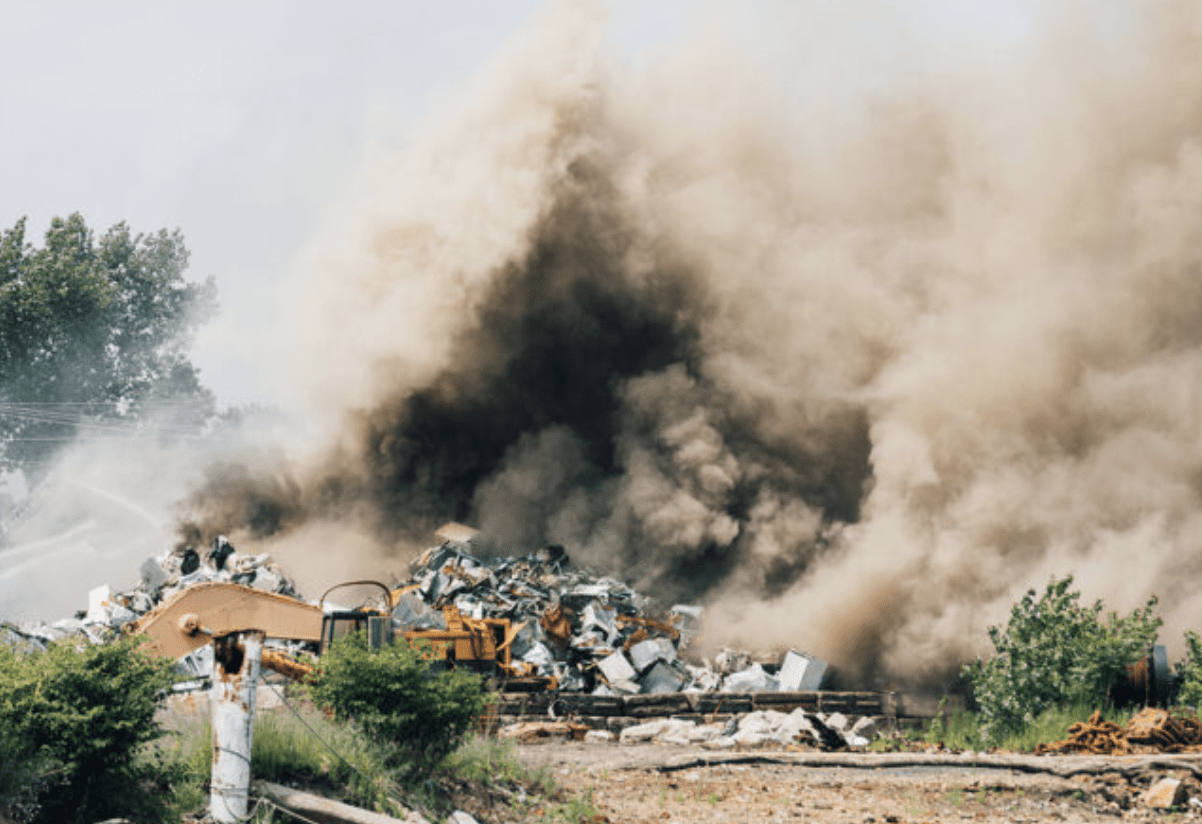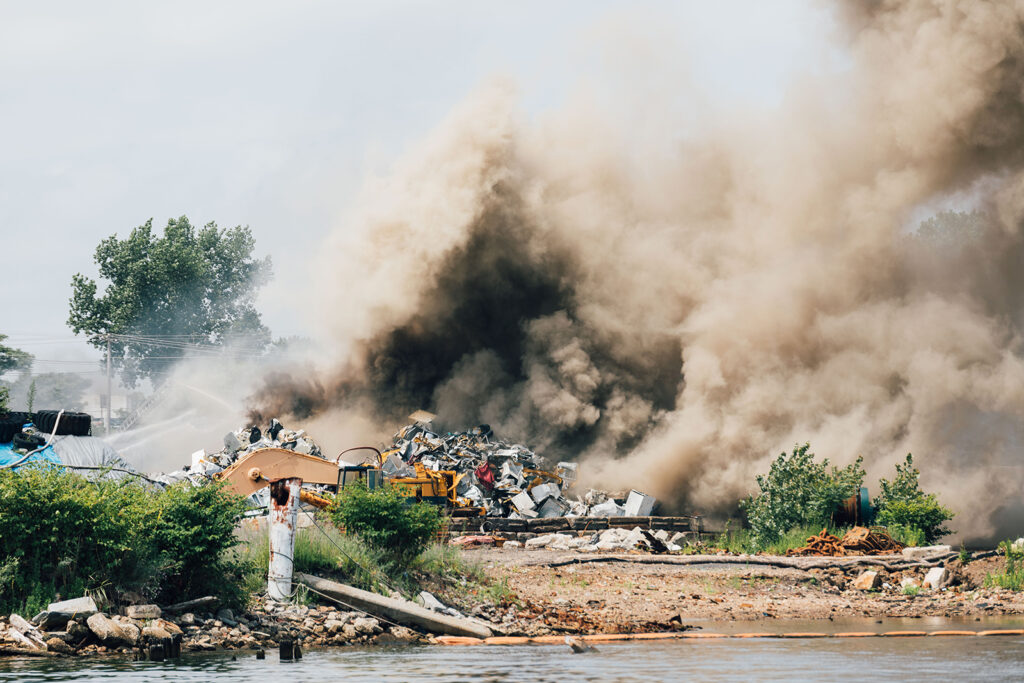Search Posts
Recent Posts
- Lawmakers consider bill to combat fraud at crypto kiosks – Herb Weiss April 7, 2025
- Operation Stork Speed to expand options for safe, reliable, nutritious infant formula in America April 7, 2025
- Rhode Island Weather for April 7, 2025 – Jack Donnelly April 7, 2025
- Networking Pick of the Week – Legislative Reception one of the must-dos of the season April 7, 2025
- Office manners so bad, some are bringing in Charm School consultants – Mary T. O’Sullivan April 7, 2025
Categories
Subscribe!
Thanks for subscribing! Please check your email for further instructions.

Frequent fires add to pollution woes along Allens Avenue – (ecoRI News, Ocean State Stories)
Originally published by ecoRI.org, a nonprofit newsroom covering environmental news in Rhode Island. Read more at ecoRI.org – and Ocean State Stories, a media outlet that publishes journalism on issues of importance to Rhode Island’s diverse communities that often are neglected or under-reported.
by Rob Smith/ecoRI News staff
Ten days after a scrap metal fire was extinguished, there was still something in the air on Allens Avenue. Silence.
It was a small but important change for residents who live in the nearby Washington Park and South Providence neighborhoods. For residents, the sights, sounds, and toxic smells of the industrial businesses along Allens Avenue and the Port of Providence have plagued their lives for decades.
Residents were granted a reprieve from business as usual. A state judge granted a request from Rhode Island Attorney General Peter Neronha to close Rhode Island Recycled Metals (RIRM), a scrapyard state regulators have struggled to bring into compliance.
On the late morning of July 10, a pile of scrap metal caught fire, sending thick plumes of brown and black smoke into the air, visible for miles. It was the second such fire in three months for the waterfront scrapyard. Providence firefighters spent much of the day putting out the flames.
“It was nasty. It smelled like a toxic soup of horrible smells,” said Washington Park resident Linda Perri. “As a former smoker and now non-smoker, it smelled metallic and smokey.”
Perri has lived in the neighborhood for 40 years. She’s been a longstanding critic of many of the polluting businesses in the area. She said state leaders and regulators have failed to keep the businesses in compliance.
Environmental regulation of the businesses comes down to two entities; the Rhode Island Department of Environmental Management, which has to approve and process the air permits that are required, and the attorney general’s office, which files lawsuits on DEM’s behalf.
It’s not a partnership that has always succeeded at cleaning up the city’s industrial waterfront. Since 2010, state leaders, DEM, and the attorney general’s office have tried, largely unsuccessfully, to bring RIRM into compliance. The business opened in 2009 without all of the permits required from the state to operate, but it took until 2015 for the state to take legal action.
The scrapyard’s history of environmental violations since then is almost as long as Allens Avenue. Multiple DEM inspections from 2010 to 2012 found the business was violating its stormwater discharge permits and illegally crushing and disposing of vessels on its property. The agency issued a notice of violation, but RIRM continued to buck DEM regulations until it entered its first administrative consent agreement with the state in 2013.
Just a few years later, the state sued, after RIRM was found not to have completed any of the agreed work in the consent agreement. RIRM then entered into a new consent agreement, but the state sued in 2016 after the scrapyard didn’t comply with the orders. The attorney general’s office asked for a special master to take away control of the company’s operations from current management and replace it with new management that would adhere to court orders.
Instead, the court appointed a special master, Richard J. Land, to oversee remediation, which curtailed DEM’s ability to act outside of the special master. In fact, it prohibited DEM from “commenc[ing] or caus[ing] to be commenced any environmental administrative or enforcement actions against the Defendants or their assets without first having notified the Special Master of Plaintiffs’ intentions and the basis therefor, and affording the Special Master an opportunity to bring such matter(s) before this Court with such reasonable notice as the Special Master deems necessary or appropriate under the circumstances.”
Progress on getting RIRM into compliance has since moved at a snail’s pace. After the first scrap metal fire in April, the attorney general’s office petitioned to have the scrapyard shut down, but the judge denied the petition.
“These fires are unacceptable,” DEM director Terry Gray said after the most recent fire. “They threaten public health, disrupt the lives of nearby residents, and continue to complicate the environmental clean-up needed at the site. DEM believes the facility should remain shut down until all violations are addressed and until all appropriate permits and licenses are received from the state and the city to allow operations to resume.”

Scrapyards contain a variety of chemicals and toxic heavy metals that are extremely flammable and polluting. (Save The Bay)
While the state has been trying to get the scrapyard cleaned up or shut down, it’s the nearby residents who have to live with the pollution.
Perri, who is optimistic that agencies like DEM have turned a corner on enforcement, said the problem comes down to people not caring or listening.
“We have consistently bad air here,” she said. “And it’s because of the dust from Rhode Island Recycled Metals, Sims Construction, Narragansett Improvement, Sprague, all of that collectively makes for bad air; we have a really high rate of asthma here.”
The federal government has identified many of the Census tracts surrounding the port area as environmental justice zones, as part of President Biden’s Justice40 Initiative. According to an online map drawn up as part of the initiative, the neighborhoods surrounding the port rank higher than the 80th percentile for low-wealth residents, unemployed residents, lead paint in homes, linguistic isolation, low median incomes, and high volumes of automobile traffic.
Allens Avenue is less a matter of environmental justice, and more an ongoing environmental disaster. The neighborhoods abutting the industrial waterfront have some of the worst asthma rates in the nation.
A 2019 study from the Environmental Protection Agency of asthma rates showed that, thanks to the confluence of the port industries and Interstate 95, Rhode Island ranked ninth in the nation for asthma rates. Both adults and children who live in Washington Park and South Providence are routinely forced to seek emergency medical treatment for respiratory-related illnesses.
And that’s not counting the fires, although data from the latest fire indicates, thanks to the wind direction, much of the smoke blew into downtown Providence and Fox Point across the river and away from the neighborhoods nearest Allens Avenue.
On the day of the fire multiple agencies engaged in local air quality monitoring in areas surrounding the fire, including the Jewelry District, at the scrapyard, and at Rhode Island Hospital and Women & Infants Hospital.
DEM officials said the air monitors didn’t pick up any elevated readings from the fire, indicating that the wind had been a factor. The agency’s emergency response unit said its stormwater discharge protections were in place, and did not observe any oil spills as a result of the fire and its subsequent dosing.
The Rhode Island Department of Health indicated additional monitoring was likely not needed according to the DEM air sensor data.
“Monitoring for new health conditions following an environmental event would occur on a case-by-case basis, depending on factors like if there was a known exposure to an environmental contaminant. It would also need to take into account how long it takes to develop a new health condition after exposure,” DOH spokesperson Joseph Wendelken said. “For some contaminants, it can take many years after exposure for the health problem to occur. Fortunately, in their air monitoring of the fire, DEM did not detect any elevated air quality readings beyond the property’s boundaries.”
Scrapyards contain a variety of chemicals and toxic heavy metals such as lead, mercury, and petroleum waste. Many of the materials typically found in such facilities are extremely flammable and polluting.
“If you look on Allens Avenue, there are these little signs that I made, like little political signs,” Perri said. “If you smell something, say something and then the phone number to DEM. I mean, you gotta go rogue, people are not listening.”
___
Photos: Save the Bay to EcoRI
